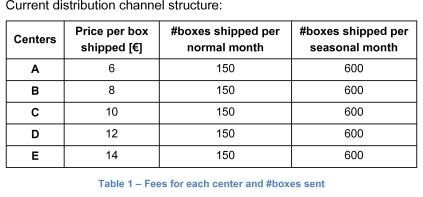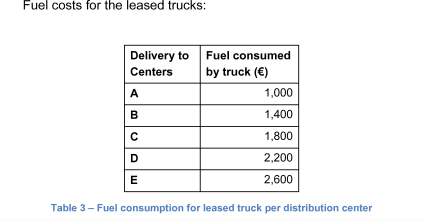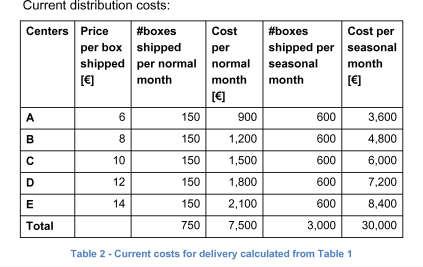Disguise distribution
Your client is a German manufacturer of disguises for events and parties called KostümCo. They segment their products in two lines: round-the-year and seasonal products.
Round-the-year products serve customers that celebrate birthdays and common parties during the whole year.
Seasonal products aim at special occasions like the carnival or the beer festival in Munich and are only sold for some time before these events.
KostümCo makes the design, manufacturing and resells the disguises to retailers in 5 different German cities.
Recently, though, the largest retail customer complained that KostümCo’s prices are too high. After some internal analyses, the client found this to be due mainly to distribution costs. You have been asked to figure out how we can reduce distribution costs.
Case Comments
Video Solution
Further Questions
In real life, what other possibilities of transportation would you look for in order to replace DHL?
Before the client can implement the cost-saving measures discussed, they realize their market share is rapidly dropping because of cheaper competitors. What would you recommend the client to do in the short term?
Note for Interviewer
More questions to be added by you, interviewer!
At the end of the case, you will have the opportunity to suggest challenging questions about this case (to be asked for instance if the next interviewees solve the case very fast).




